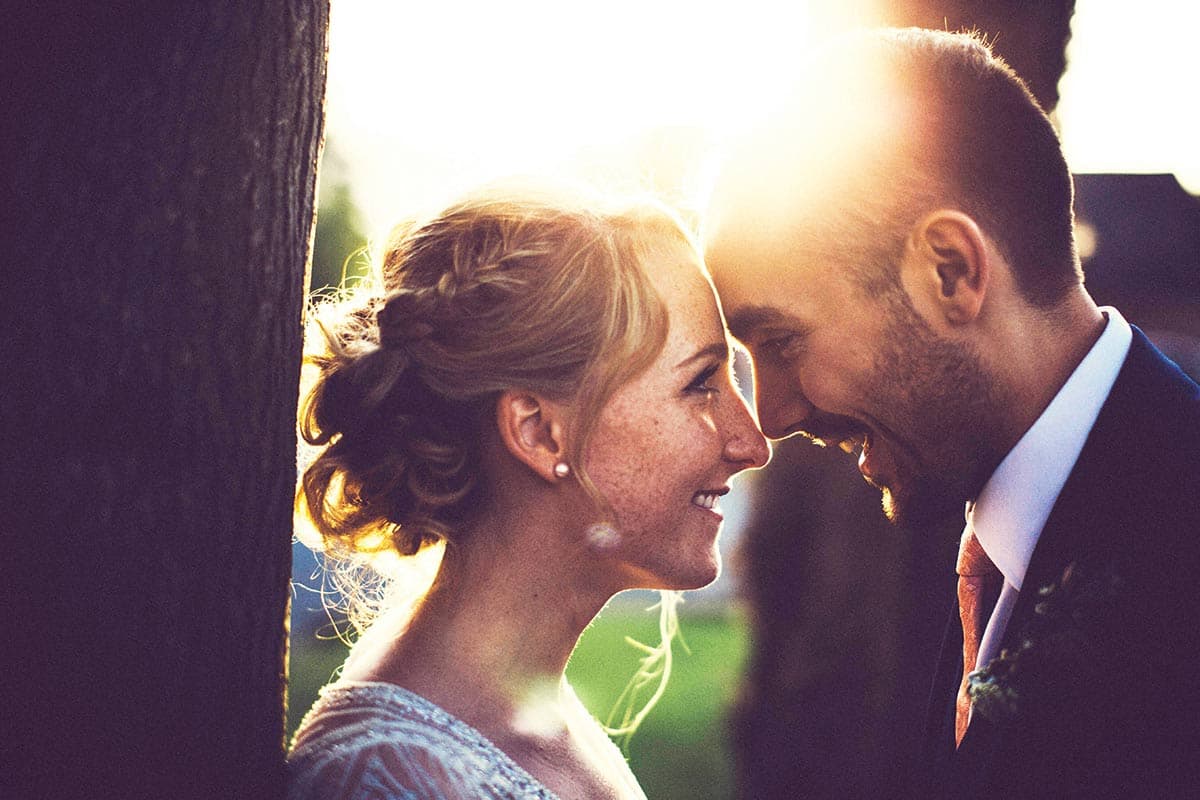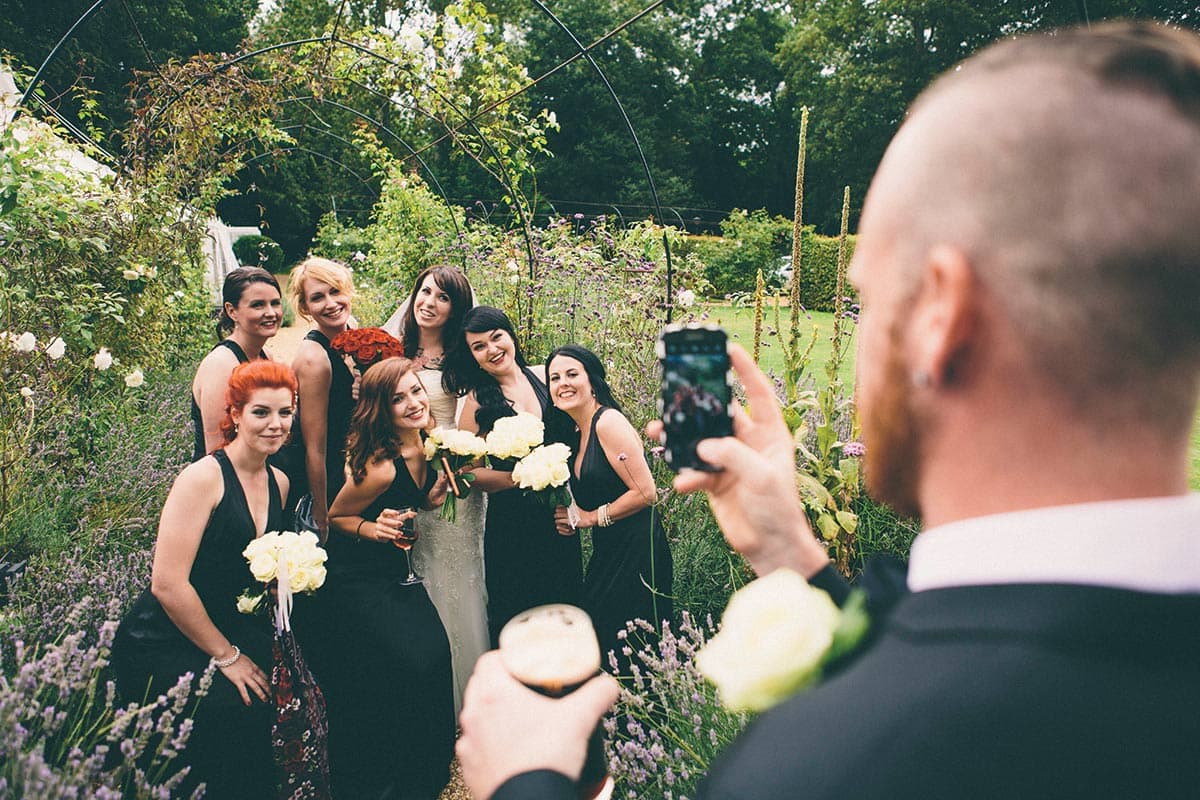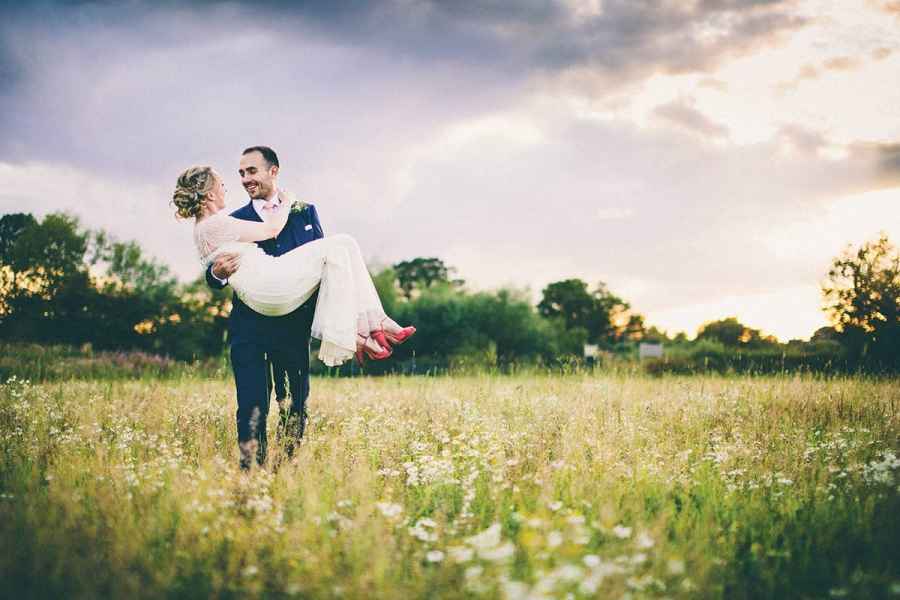For some, just hearing the words ‘wedding photography’ is enough to bring them out in a cold sweat. It’s certainly not a job for the faint of heart, as it requires a multitude of skills, a fair amount of patience and the correct photographic equipment in order to do the job right. But just ask any seasoned wedding snapper and they’ll tell you that there’s no other photographic genre that’s quite as exhilarating and rewarding. Being granted the privilege of capturing the happiest day of two people’s lives is something that offers a buzz unlike any other and for those with the ambition and the creativity, it can be an opportunity to capture some truly stunning imagery along with crafting a longstanding and profitable career. That said, it’s also something that shouldn’t be entered into lightly. As a wedding photographer it’s your responsibility to ensure that every aspect of the day is captured immaculately – after all, there are no re-dos!
To give yourself the best chance of capturing some impressive imagery, it’s firstly important to ensure that you have the correct equipment for the job. Starting with the obvious, you’re going to need a camera that’s up to the task of shooting hundreds, if not thousands, of photos across the day. A full-frame DSLR, such as the Canon EOS 6D (£1,119 body only) and 5D Mark III (£2,178 body only), is often the preferred choice for professional wedding photographers as the larger sensor provides greater amounts of detail for the highest quality images. However, if your budget can’t quite stretch to the glitz and glam of a full-frame camera, then don’t worry, as a mid-range APS-C sized D-SLR, such as the Canon EOS 80D (£999 body only), will still be able to cope with the fast pace of a busy wedding day.

Shoot with the sun behind the couple to avoid squinting eyes and harsh shadows
All of these cameras are able to create 20-megapixel (or higher) resolution images, which means they are ideal for creating up to A3 sized prints without the need to interpolate the images in post production – handy for any clients who are looking to order large prints of your work.
The lenses in your camera bag are just as important as the camera itself. If you don’t have a lens long enough to reach the action at a distance, or you’re without a wide angle in order to fit everyone into the group shot then you’re soon going to find yourself in hot water. Having a variety of lenses that cover most focal lengths is always the safest bet, though whether you decide to favour zoom lenses over primes, or visa versa, or both, is entirely down to your own personal preference. A medium zoom lens like the Canon 24-70mm f/2.8L II USM (£1,400) is a fantastic workhorse as not only does it provide a wide angle for group shots, the 70mm end is a perfect focal length for portraits. When opened up fully to the wide f/2.8 maximum aperture, this lens is able to let in much more light than most standard zooms, which is great for shooting dingy church interiors without having to crank the camera’s ISO to a higher sensitivity and run the risk of having shots riddled with digital noise.

Prime lenses are perfect for super-shallow depth-of-field effects
Sometimes the best shots are those that have been taken without the person even knowing, and the best way of doing this is by taking them at a distance with a telephoto zoom, such as the Canon 70-200mm f/2.8 L USM (£945). The 70-200mm focal length pairs wonderfully with the aforementioned 24-70mm lens, meaning that between these two lenses you’re covered for most types of photography.

The Canon EF-70-200m f/2.8L IS II USM
Aside from zooms there’s also the option to opt for prime lenses instead. Obviously the fixed focal length of a prime lens means that in order to get closer or further away from the action you’ll need to physically move the camera, which some may find limiting compared to a zoom. However, on the plus side, prime lenses are notably lighter in weight and offer a much wider maximum aperture.
Changing back and forth between lenses can be a fiddly and time-consuming chore, especially at a wedding where seconds often mean the difference between capturing the shot or not. One solution to this problem is to purchase a second camera body. If your pockets are deep enough to cover the expense, owning two camera bodies grants a number of benefits; firstly it means that you can attach a different lens to each body and have them available at all times. Also, the second body will mean that you always have a back up should the worst happen and one of your cameras ceases to function.

If bad weather is stifling your location choices, use off-camera flash for studio-quality portraits indoors
It’s often the case that smaller accessories are quickly overlooked, but are actually vital pieces of gear that will make the entire shooting process a much smoother operation. Investing in a handful of additional camera batteries will ensure that your camera never runs out of juice at a vital moment. If you want to further reduce the time spent swapping over camera batteries then you could always look to purchase a battery grip for your camera. This unit slots on to the base of your camera and allows you to store multiple batteries at one time, dramatically extending the battery life of your camera.
Over the course of a wedding day it’s not uncommon to take upwards of a few thousand images (depending on how snap happy you are), so you’re going to need somewhere to store all of that data. Purchasing half a dozen high-capacity, high-speed memory cards will not only ensure that you have ample space for all those images, but will also keep your camera’s buffer clear when shooting in continuous burst mode for uninterrupted shooting. Do bear in mind, however, that if you decide to shoot in Raw then your images will be far larger in size than a standard JPEG, meaning you will need larger memory cards (or multiple smaller cards) to store them.

Shoot with a wideangle lens to pack large groups of people into the shot
If you’ve been booked to photograph the wedding reception as well as the ceremony, then you’ll also need to make sure that you’re well prepared for capturing images in low light. Once the music starts blaring and the lights go down, it’ll be up to you to create your own source of light or be faced with noisy images created by using a high ISO. Investing in a flashgun, such as the Canon Speedlite 430EX III-RT (£219), will allow you fire a powerful beam of light at your target to illuminate them without relying on the ambient light.

It’s also worth mentioning that the ‘RT’ in the 430EX III’s name stands for Radio Transmitter, which means that the flash is able to be fired remotely off-camera via compatible DSLRs or with the aid of the Canon ST-E3-RT Wireless TTL Flash Controller (£239). This means that if you want to boost your creativity even further you could also look to invest in one or more light stands and flash brackets in order to fire the flash off camera for studio-style lighting effects.
Organisation is key
The night before the big day, spare a few moments to make sure that you have packed everything you may need for the day ahead. You could always write a checklist of essential equipment you think you’ll need and then go through it item by item to make sure that you have packed everything you require. As you’re working your way through the list, it’s also important to test each of the items to ensure that they are in full working order so that you don’t get any nasty surprises when you come to use them on the day. Stock up on fresh AA batteries (you can never have too many!) and make sure that all of your camera batteries are fully charged and ready to go. If you have a lens cloth, give your glass a quick once-over to remove any dust or dirt build-up, too.
The secret to good preparation is to give yourself ample time to go through and pack everything instead of rushing it at the last minute and risk forgetting something. It’s also vital not to over pack – it’s good to cover yourself for every eventuality, but taking too much stuff may end up slowing you down.
Back-up as you shoot
It’s better to be safe than sorry. If you happen to own a laptop and an external hard drive, be sure to pack it with the rest of your camera gear as you can use it to back up your images on the day. Usually there will be a lull period while the bride and groom enjoy their wedding breakfast, so this is a good time to back up your shots onto your laptop for safe keeping. It’ll also allow you to free up some space on your memory cards for further photos during the evening’s celebrations.







